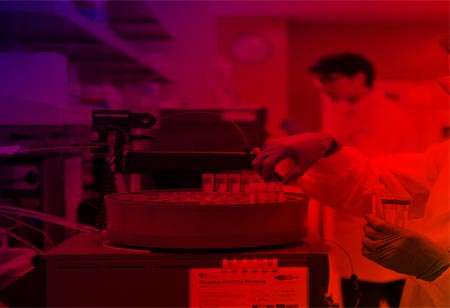We can breathe more smoothly owing to the contributions of chemical engineers.
FREMONT, CA: Chemical engineers have often been at the front line of environmental protection. With an exceptional perspective that bestrides both science and engineering, they function in teams with other experts.
By developing complicated solutions to our vexing environmental challenges, chemical engineers strive to save our world. One example is a successful conversion of sulfur oxides from power plant gases into gypsum for wallboard. The elimination of trace impurities from drinking water through reverse osmosis is another.
Cars and the environment
We can breathe more smoothly owing to the contributions of chemical engineers. Developing more efficient engines that generate lesser dangerous pollutants, they have aided lower the environmental influence of gasoline- and diesel-powered cars, buses, and trucks.
Cleaner-burning fuels
Another method chemical engineers aid lower automotive air pollution is advanced petroleum-refining techniques. One illustration is hydrotreatment, which employs hydrogen gas and a catalyst to generate gasoline and diesel fuel with considerably lower levels of sulfur and lead.
These techniques have enabled reformulated fuels to function as earlier leaded fuels while removing fewer pollutants.
Green Manufacturing
Smokestacks, once the stereotypical image of factories and power plants, no longer spew black smoke into the air. Due to innovations by chemical engineers, industrial facilities now captivate and neutralize air pollutants before they can be liberated into the environment.
Blue skies ahead
Pollution-control systems advanced by chemical engineers produce clean stack gas enclosing steam rather than the smoky flue gases generated by power plant stacks, as displayed in this artist’s rendering.
Chemical engineers have supported present new technologies to allow electric power plants and industrial facilities to greatly lower such deadly airborne emissions as:
• Sulfur dioxide (SO2),
• Nitrogen oxides (collectively called NOx),
• Mercury, and
• Unburned hydrocarbons.
Cleaner coal use
Coal rests the cheapest and most plentiful of all fossil fuels. Nevertheless, it is also the most contaminated. Chemical engineers have functioned to perfect coal gasification to produce electricity and fuels from coal with less environmental influence. Now utilities can burn clean synthetic gas from coal and have greatly fewer emissions than conventional pulverized coal combustion.
Clean water
Clean water, important to human health, is also required for several manufacturing methods. Numerous innovative means of treating raw water to make it appropriate for drinking or employment in manufacturing have been advanced by chemical engineers. They also function in wastewater treatment to improve safety and allow reuse.
Cleansing drinking water, treating wastewater
With the population boom and industry development, the need for cost-effective water purification and wastewater-treatment technologies has turned more urgent than ever. Chemical-engineering principles are employed to eliminate damaging pollutants from both raw source water and polluted wastewater.
Particularly, chemical engineers have cultivated cost-effective methods to:
• Refine water from subsurface aquifers and surface sources, like rivers and lakes, to generate potable drinking water;
• Generate purified water that fulfills the more strict needs for industrial use; and
• Treat polluted industrial and municipal wastewater and sewage to make them fit for discharge to public waterways or reuse.
Treating water
Modern-day raw water sources or contaminated wastewater treatment employ various physical, chemical, and biological techniques.
Chemical engineers relate to parting harmful materials from good water as a treatment train. At diverse stages in the multistage treatment procedure, unwanted constituents are separated using the:
• Vacuum or pressure filtration,
• Centrifugation,
• Membrane-based separation,
• Distillation,
• Carbon-based and zeolite-based adsorption, and
• Advanced oxidation treatments.
Activated carbon is a more adsorbent form of carbon generated when heated charcoal. Its intricate internal-pore structure gives an exceptionally high internal surface area. Activated carbon eradicates impurities via adsorption from both aqueous and gaseous waste.
Nowadays, membranes made from cellulose acetate, ceramics, and polymers are used more. The applications come in different innovative designs, comprising tubular, hollow-fiber, plate-and-frame, and spiral-wound configurations. The target of membrane design is to:
• Increase the accessible surface area,
• Smaller membrane pore size (to enable the more precise removal of smaller pollutants),
• Lessen the pressure drop the fluid will arise when flowing through the unit, and
• Recognize more cost-effective system designs.

